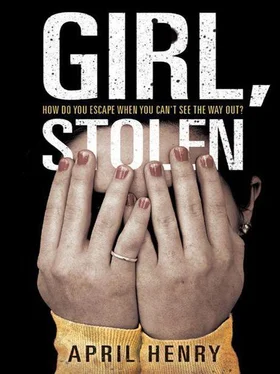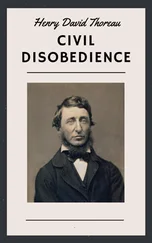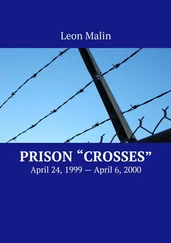The announcer cut in. “Police say Cheyenne and her stepmother stopped at the pharmacy to pick up a prescription. The stepmother, Danielle Wilder, went in alone to get it, and that’s when the girl was taken. She is described as five foot two, one hundred five pounds, with brown eyes and long, dark, curly hair. She was last seen wearing a black tracksuit and a silver down coat. The car is a dark green Cadillac Escalade SUV, license number 396CVS. While there are reports of the car being driven at a high rate of speed out of the parking lot, witnesses were unable to give a good description of the person driving the car. An AMBER Alert has been issued. If you spot the vehicle, police ask that you call 9-1-1.” The announcer took a breath. “In other news…” Roy turned down the radio.
Griffin braced himself for the outburst he knew would come. The car was not just hot, it was on fire. And the girl was more a problem than ever.
But Roy just looked thoughtful. He turned, spit a stream of tobacco juice, and wiped the back of his mouth with his hand.
“President of Nike, huh?” Roy looked toward the house. “We need to think about this a little more. This might change things.”
 STEALING A GIRL
STEALING A GIRL
The glass bounced off the edge of the dresser. It quivered in Cheyenne’s fingers but didn’t break. With her hands tied, it was hard to put much strength behind what was basically just a flick of her wrist. And a little part of her was afraid of cutting herself.
Cheyenne steeled herself and swung harder.
With a ringing sound, the glass bounced off again, unscathed.
She reminded herself that she had more to fear than getting cut. What these men might do to her was much, much worse. When next Cheyenne swung the glass, she pivoted with her hips and twisted her wrist as hard as she could.
Time seemed to slow down. She felt the impact and then the cracks radiating out as the glass split and broke. Cheyenne was left holding one large piece while several others pinged off the floor. Gingerly, she strained with the fingers of her free hand to explore the piece she still held. It was about two inches long and an inch wide. The edges were curved and very sharp. Even touching them lightly, she was afraid. It was like running her fingertip along a knife’s edge, full of dangerous promise. Her heart was beating in her ears.
What should she do first? The cord that tied her to the bed would be easier to cut, but she would still have her hands bound behind her. Cheyenne decided to concentrate on cutting the shoestring around her wrists.
She gritted her teeth and twisted her hand until the edge of the glass rested on the shoelace. The position was almost impossible to maintain. The tension ran all the way up to her shoulder blades. Then she realized she needed to turn her hand even farther, or she would risk slicing her left wrist as well as the shoestring. She gritted her teeth, twisted her wrist, and began to saw.
In her mind’s eye, the shoestring was white. She had never asked anyone what color her shoestrings were, but white was the only color that made sense. Cheyenne knew that her shoes were light blue and that — before the accident at least — shoelaces had pretty much come in white, brown, or black. So it was probably white, and that was how she pictured it. Cheyenne still “saw” things, even things she had never laid eyes on before the accident. And it was more than just the little blurry slice of vision she had left. She didn’t know what it was like for those who had been born blind, but for her, imagining that she could still see, as if she had simply closed her eyes and could open them to view the world at any time, helped her to create mental maps of rooms and buildings and even neighborhoods. And the maps made it easier for her to move around, whether it was in her room at home (where she really had seen most things before she lost her sight), or at her school or through downtown Portland (both places where her mental maps had to be built from a combination of imagination and memory).
So in Cheyenne’s mind, the shoelace was white, the bedpost she was tied to was painted brown, and the soft quilt on the bed was made up of alternating squares of white and pale yellow. And even if she twisted her head and concentrated, her sliver of vision might not be clear enough to confirm any of this.
The doctors said it was good practice to hold on to her visual memory and to exercise her skills as long as she could. Because she had been born sighted, Cheyenne still related to the world the way a sighted person would. When she dreamed, she still saw colors and faces, furniture and flowers, and was shocked when she woke up and realized she couldn’t see any of those things. And deep inside herself, Cheyenne cherished the hope that someday she would see again. Every few months, her dad would read her some story in the paper about experiments with computers or implants. Danielle didn’t like that he read these stories to Cheyenne. She talked about raising false hope. But Cheyenne had long ago decided that she would rather have false hope than no hope at all.
Sure, Cheyenne had learned how to “travel” with a cane — which was what the professional blind people called it. She had learned to use a computer that spoke to her. She had learned how to organize her clothes so they weren’t inside out or clashing. She could cook, eat, put on makeup, do her nails, fix her hair. But it still couldn’t take away the times when she said something about a person she thought wasn’t in the room — only they were. Or the cashiers who saw Cheyenne put the clothes on the counter and open her wallet and still said to her friends Kenzie or Sadie, “Will she be paying by check or credit card?” As if she wasn’t capable of speech.
The room was cold, but Cheyenne’s hands were sweating, making it hard to keep a good hold on the broken piece of glass. The tendons in her wrist ached. She ignored everything but the thought that soon she would have her hands free.
A noise made her freeze. It sounded like a door swinging open at the far end of the house. Cheyenne recognized Griffin’s voice, and that of his dad. She had a few seconds, maybe less. With the side of her free foot, she tried to sweep the other shards of glass under the dresser. Straining her wrist until it felt like it might snap, she managed to slip the broken piece of glass into her coat pocket. By the time she heard the doorknob turn, Cheyenne was again sitting on the bed, sweat running cold down her back. In her mind’s eye, she imagined several pieces of glass still lying in the middle of the floor. Winking in the light. Giving her away. Taking a deep, shuddering breath, she told herself there was nothing she could do about it now.
The door swung open. Their first words were a surprise.
“Why didn’t you tell me who you were?” demanded Griffin.
Cheyenne felt confused. Now that she was no longer concentrating so fiercely on cutting away her bonds, exhaustion and sickness crashed over her like a wave. “I did tell you. I’m Cheyenne Wilder.”
Roy said, “But you’re the daughter of Nike’s president.”
“How do you know that?” She spent most of her time trying to play it down. Even at the private school that she attended, where everyone’s parents were doctors or lawyers, people acted like what her dad did was a big deal. All it meant was that he traveled a lot and that the whole family dressed in Nike — and Harley, Converse, and Cole Haan — clothes from head to toe. And sometimes she met famous athletes.
“There was a story about you on the radio,” Griffin said. “Your dad said you were so sick that you could die. I just thought you had a cold or something.”
Читать дальше

 STEALING A GIRL
STEALING A GIRL










